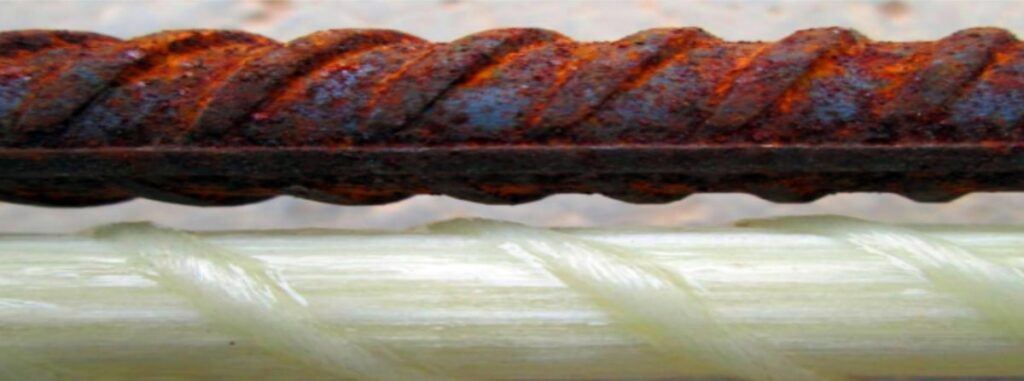The construction industry has always been on the forefront of innovation, continuously searching for materials and methods that optimize strength, durability, and cost-effectiveness. One of the most revolutionary materials making a significant impact in recent years is the Fiber Reinforced Polymer (FRP) rebar, which has transformed the way civil engineers and construction professionals perceive reinforcement. Let’s delve into the global experiences surrounding the use of FRP rebars and understand its significance.
Content
What is FRP Rebar?
At its core, FRP rebar is a composite material made of a polymer matrix reinforced with fibers, typically glass, carbon, or basalt. Unlike traditional steel rebars, composite rebars are resistant to corrosion and offer a higher strength-to-weight ratio. This unique composition provides them with a host of benefits which have made them particularly appealing for various construction applications.
The idea behind composite rebar isn’t new. Historically, civilizations used materials like bamboo as reinforcement, owing to its natural strength and flexibility. However, the modern version of composite rebars – fiberglass rebars – originated in the mid-20th century when manufacturers began experimenting with alternatives to traditional steel reinforcement. The goal was simple: to find a solution to the corrosion problem that plagued steel rebars, especially in coastal regions or areas with high salt content.
Global Adoption and the Shift to FRP
The use of FRP in construction has been gaining traction globally, and the reasons are multifold:
Corrosion Resistance: Unlike steel, FRP rebars are inherently resistant to corrosion. This feature extends the lifespan of structures, especially in environments prone to salinity or chemical exposure.

Weight: FRP rebars are significantly lighter than their steel counterparts, reducing transportation costs and easing the installation process.
Magnetic Neutrality: For structures like hospitals or scientific facilities where magnetic interference can be a concern, the use of FRP proves invaluable.
Leading nations like the USA, Canada, Japan, and several European countries have been at the forefront of FRP rebar adoption. For instance, in the USA, the use of FRP for bridge decks has been a game-changer, especially in coastal areas. Meanwhile, Japan, prone to seismic activities, has seen the value in using flexible yet strong FRP rebars in its structures, enhancing earthquake resilience.
The Manufacturing Prowess: FRP Rebar Manufacturers and Innovations
The rise in demand for FRP rebar has led to the emergence of dedicated FRP rebar manufacturers who are continually innovating. While the basic principle involves embedding fibers in a resin matrix, manufacturers are exploring various fiber combinations, resin types, and production methods to enhance the strength and flexibility of the end product.

The process of rebar manufacture is intricate. The continuous fibers are pulled through a resin bath, ensuring they are thoroughly coated. They are then passed through a shaping die and subsequently cured, either through heat or ultraviolet light, solidifying the resin and forming the rebar.
Many leading FRP rebar manufacturers are also focusing on sustainability, exploring recyclable resins and sustainable fibers to reduce the environmental footprint of composite rebars.
Learn more: Environmental Performance of FRP
FRP vs. Steel: A Comparative Insight
While FRP rebars have numerous advantages, it’s essential to understand the nuanced differences between them and traditional steel rebars:
Tensile Strength:FRP rebars excel in tensile strength, often surpassing steel. However, they may have a lower modulus of elasticity, meaning they can be more flexible.
Thermal Conductivity: Composite rebars have lower thermal conductivity than steel, making them suitable for regions with extreme temperature fluctuations.
Cost: Initially, FRP rebars might seem more expensive than steel. However, when considering the extended lifespan of the structure and reduced maintenance costs, the long-term economic benefits of FRP become apparent.
Learn more: FRP Rebar vs. Steel Rebar
The Road Ahead: Future of Composite Rebars
The global experiences with FRP rebars point to a promising future. As more construction professionals become familiar with its benefits and as FRP rebar manufacturers continue to innovate, the use of FRP in construction will likely increase.
Moreover, as global infrastructure demands grow and environmental considerations become paramount, the sustainable and long-lasting nature of composite rebars positions them as the reinforcement material of the future.
Conclusion
The world’s experience with FRP rebar reflects a broader trend in construction: the move towards materials that are not only strong and durable but also environmentally conscious and cost-effective in the long run. As technology progresses and the benefits of FRP become even more evident, we can expect its prominence in global construction to rise.
By exploring the history, manufacturing processes, and global adoption of FRP rebars, it’s evident that the future of construction reinforcement lies in these innovative composite materials.

